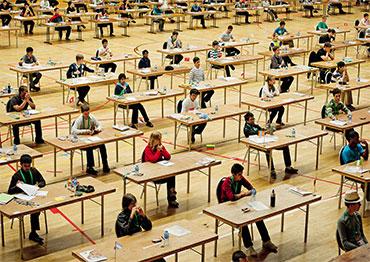Yun Zhiwei enrolled in Peking University’s math department in 2002 and later completed his PhD in math at Princeton University. Yun said that over the years, the curriculum in Chinese math departments covered a wide range of subjects but lacked theoretical depth in comparison with US universities, particularly for graduate students.
“It’s not necessary to make all math courses very difficult, but talented students who are interested in the subject should have access to more difficult courses,” he said.
In 2009, China’s Ministry of Education launched the “Training Plan for Gifted Students in Basic Disciplines,” an elite project that offers college-level classes in fundamental subjects to gifted young students. Peking University was one of the universities in the pilot program where math students could take challenging classes in areas including algebra, geometry and mathematical analysis.
Over the years, other Chinese universities started gifted programs for teens. Chen Qing, director of the young talent program at the University of Science and Technology of China in Hefei, Anhui Province, said that gifted education programs offer access to university lectures tailored to school-age students. There is only one condition – the selected students must be exceptionally talented.
Yang Le said that Western math education and research dates back more than 300 years, while modern Chinese math education only started 100 years ago.
In the early 1950s, China adopted the Soviet model and focused on developing its applied and computational math research. On July 1, 1952, the Math Institute of the Chinese Academy of Sciences was established and noted mathematician Hua Luogeng became its first director. During his inauguration speech, Hua proposed three research directions for Chinese math studies: fundamental, applied and computational.
He said that fundamental research is the linchpin of all subjects in which researchers should work steadily and not rush to publish papers. Nevertheless, for a long time afterwards, China attached growing importance to applied subjects.
Tian Gang at Peking University said that over the past 20 years, math teaching resources have significantly improved in Chinese higher education. For example, Peking University has recruited talented young teachers and influential scholars. Students at Peking University have access to cutting-edge math research, he added, but generally speaking there is still a big gap in math education between China and the US.
Liu Yi, also a professor at the Beijing International Center for Mathematical Research, Peking University, said it is common for top universities in the US to hold seminars on advanced research topics where scholars share their latest research with students. Such classes do not happen in China. Liu added that almost all the experts conducting research in cutting-edge fields live overseas. Many Chinese universities are strong in only one or two research areas and unable to hold similarly wide-ranging seminars.
Yang said that while research is a priority at many Chinese universities, many young scholars repeat research projects already conducted overseas because they guarantee positive results.
“There is little innovation in many research programs and young researchers only copy the research framework and procedures of overseas scholars,” he said. “They end up saying that they did a better job than the famed overseas professors did, but their work is at most only a bit better in some aspects.”

 Old Version
Old Version

